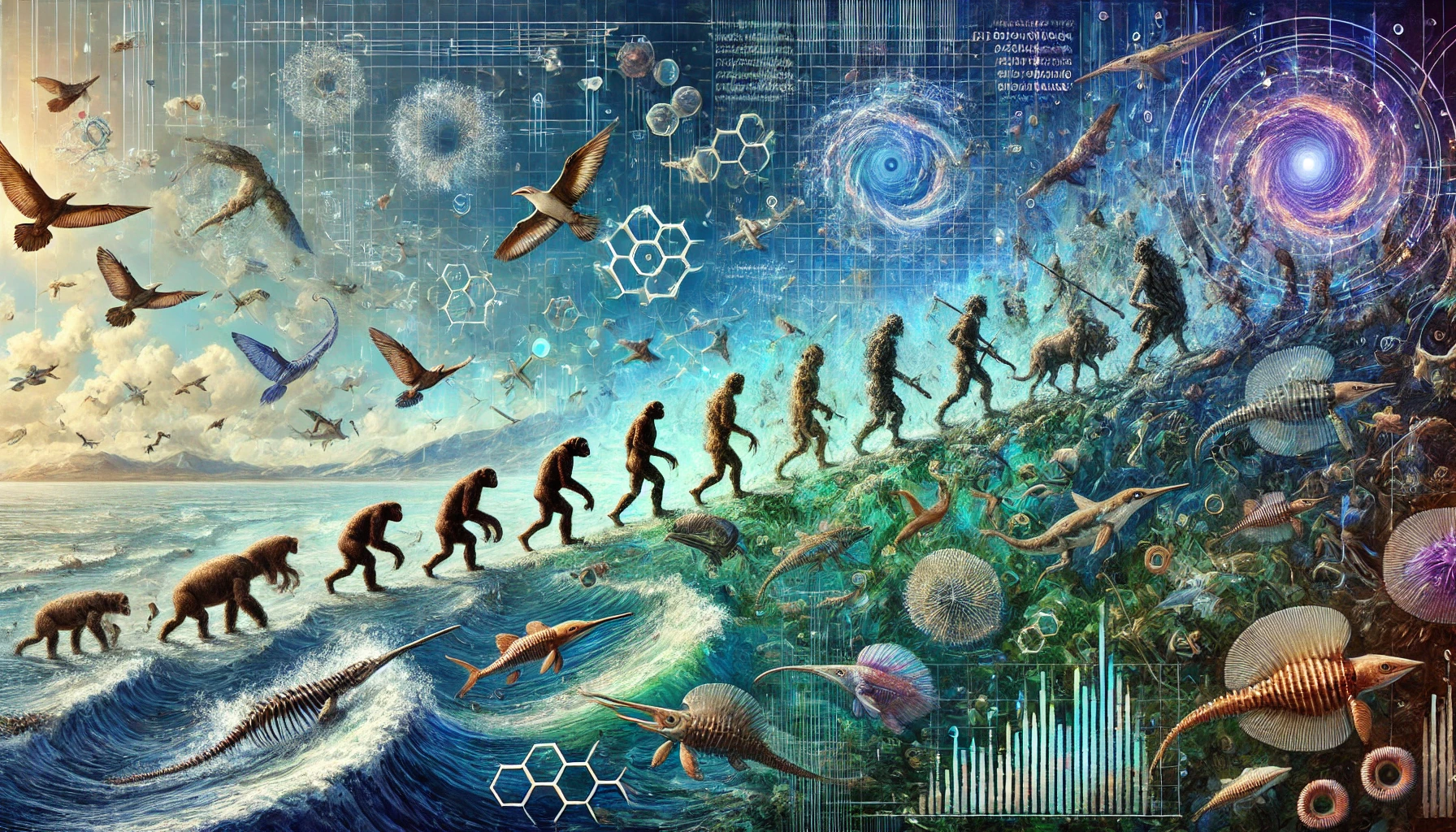How AI Simulates 500 Million Years of Evolution in Hours
How AI Simulates 500 Million Years of Evolution: A Journey Through Time and Technology
Introduction
Imagine condensing 500 million years of evolution into just a few hours. Sounds impossible, right? Well, artificial intelligence (AI) is making it a reality! What took nature millions of years to achieve through gradual adaptation, AI can simulate in a fraction of the time. It's like watching a time-lapse video of life on Earth, but driven by sophisticated algorithms and computational power.
In this post, we’ll dive into how AI simulates 500 million years of evolution, explore its implications, and take a closer look at whether technology can really outpace nature’s own timeline of evolutionary change.

The Basics of Evolution: From Nature to AI
Let’s start with the basics. Evolution, as nature intended it, is a slow and methodical process. Over the span of billions of years, life on Earth has continuously adapted to survive in ever-changing environments. Natural selection, mutation, and reproduction drive this process, refining organisms to fit their ecological niches.
But here’s the twist: AI can replicate these long-term processes. Through evolutionary algorithms, AI mimics the cycle of mutation and selection, honing designs in the same way nature evolves species. Think of it as evolution on fast-forward, allowing us to study life’s possibilities without waiting millions of years.
Anecdote: Imagine if Charles Darwin were alive today. He’d be astounded to see that we’ve gone from studying finches on the Galapagos Islands to simulating millions of years of evolution with code. What took him years of careful observation, we can now explore in a lab with a supercomputer. Crazy, right?
How AI Simulates 500 Million Years of Evolution
So, how exactly does AI pull this off? It’s all about algorithms. Specifically, genetic algorithms designed to mimic the processes of mutation, selection, and reproduction—the same forces that drive biological evolution. These algorithms allow AI to test millions of variations, picking the "fittest" solutions over and over again until they converge on the best possible outcome.
For example, imagine an AI tasked with designing a more efficient wing for a drone. The AI starts with random designs, then “evolves” them by making small changes, selecting the best designs, and repeating the process. In just a few hours, AI can simulate what would have taken nature millions of years to perfect.
Example: Picture this like a time-lapse of evolution. You start with a basic prototype, and in every frame, it changes and improves—faster than your eye can track. That’s the power of AI in simulating evolution.

The Impact of Simulating Evolution on Science and Innovation
This isn’t just a cool tech experiment. The ability of AI to simulate 500 million years of evolution opens up endless possibilities in fields like biology, robotics, and medicine. By mimicking the evolutionary process, AI can help researchers design better medicines, optimize robotic behaviors, and even engineer new materials that can adapt to different environments.
Use Cases:
- Biology: AI simulations help scientists understand how certain traits evolve, potentially leading to breakthroughs in genetics or conservation.
- Robotics: Engineers use AI to evolve the perfect walking gait for robots, making them more adaptable and efficient.
- Medicine: AI simulations could speed up drug discovery, helping to find treatments that work best for different diseases.
The power to simulate evolution allows us to test and improve complex systems without waiting for nature to do the work. It’s a game-changer.
Nature vs. AI: Can Technology Really Outpace Evolution?
Despite these breakthroughs, the question remains: can AI really outpace the complexity of natural evolution? While AI is incredibly efficient at simulating certain processes, it’s still limited by the data and algorithms it relies on. Nature, on the other hand, has billions of years of chaos, randomness, and environmental influence on its side.
Comparison: Think of it like this—AI is like a master chess player who has studied every move ever made. Nature, however, is the unpredictable chess opponent who sometimes flips the board. Evolution in nature has an element of randomness and surprise that AI, no matter how advanced, may never fully replicate.
Question for Readers: What do you think? Could AI ever fully capture the complexity and unpredictability of natural evolution, or will it always be one step behind?

Conclusion
AI simulating 500 million years of evolution is a mind-blowing concept. It gives us a glimpse into how life evolves, but also pushes the boundaries of what we can achieve in science, medicine, and technology. While nature’s evolutionary process is still unmatched in its complexity, AI offers a powerful tool to explore, optimize, and innovate.
It’s not a question of AI versus nature—it’s about how both can work together to solve some of the world’s biggest challenges. As we continue to explore the potential of AI, who knows what incredible discoveries await?
Call to Action: Interested in learning more about AI and evolution? Leave your thoughts below—do you think AI will ever truly replicate nature’s evolutionary genius?
